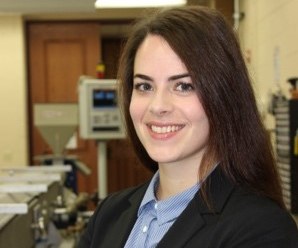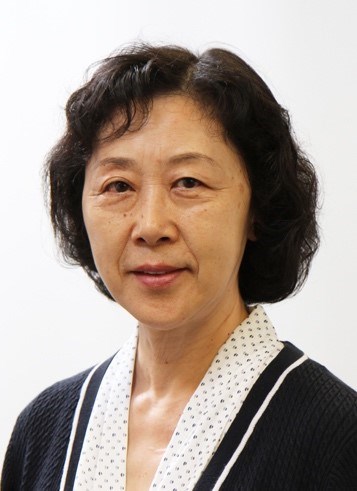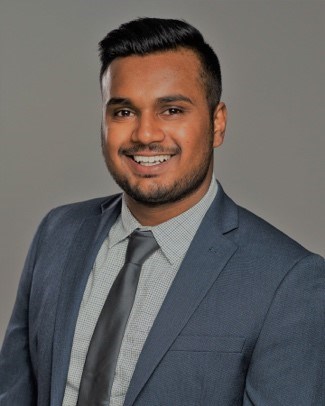SPE announces 2019 ACCE Best Paper award winners
The three winning authors will present their papers at the SPE ACCE conference this week in Novi, Michigan.
The organizing committee for the SPE Automotive Composites Conference & Exhibition (ACCE) has announced the Best Paper Award winners of the group’s nineteenth-annual show, which takes place Sept. 4-6 in Novi, Mich., U.S. The three winners will be honored for excellence in technical writing with a commemorative plaque during the SPE ACCE opening ceremonies today:
- Sara Andrea Simon, a Ph.D. candidate at the Polymer Engineering Center (PEC) at the University of Wisconsin-Madison (Madison, Wis., U.S.), won first place in this year’s competition,
- Dr. Xiaoming Chen, a technical expert at Ford Motor Co. (Dearborn, Mich., U.S.), won second place, and
- Dinesha Ganesarajan, a graduate student working on his Master of Science degree in the Chemical Engineering department at the University of Waterloo (Waterloo, Ontario, Canada), placed third in the competition.

Sara Andrea Simon. Source | SPE
Sara Andrea Simon won first place for her paper titled “Direct Fiber Model Validation: Orientation Evolution in Simple Shear Flow.” The paper will be presented on Sept. 4 from 1-1:30 p.m. in the Advances in Thermoplastic Composites session at the conference. About this topic, the author says, “The ability to simulate the processing of fiber-reinforced composites has become indispensable for the automotive industry. Particle-level simulation, in specific, is a promising tool that can be employed in the improvement of commercial software. In this work, reliable fiber orientation evolution data was obtained to aid in the validation and development of our particle modeling approach for reinforcing fillers.”
Simon is currently working in collaboration with Volkswagen on a new physical foaming injection molding technique to advance lightweight automotive constructions.

Dr. Xiaoming Chen. Source | SPE
Dr. Xiaoming Chen won second place in the competition for her paper titled “Fatigue and Strength CAE and Test Results.” She will present her paper on Sept. 6 from 10:30-11 a.m.in the Opportunities and Challenges with Carbon Composites session at the conference. “The carbon fiber composite subframe design was CAE driven,” Chen says. The performance of the prototype subframe was verified by component and vehicle tests. The CAE predictions for the tests had various degrees of correlation with the physical test results.”
Chen holds a Ph.D. in mechanical engineering from Northwestern Polytechnical University in China and is an Alexander von Humboldt fellowship recipient. Chen started her career as a crash safety engineer at Ford Truck Operations and later joined the Lightweight Architecture Team of Research and Advanced Engineering. Her current projects are related to lightweight chassis systems and components using advanced high-strength steel, aluminum, magnesium and composites materials.

Dinesha Ganesarajan. Source | SPE
Dinesha Ganesarajan’s paper is titled “Latest Breakthroughs with Hybrid Reinforced Composites in Lightweight Applications.” Dr. Leonardo Simon, University of Waterloo and ACCE technical program co-chair, will present his paper on Sept. 5 from 10:30-11 a.m. in the Sustainable Composites session at the conference. “My work explores the utilization of hybrid composites in the automotive industry for body interior and under the hood applications," Ganesarajan says of his project. “The use of naturally-sourced filler material with the combination of glass fiber yields superior performance properties with a lightweighting initiative. This is a necessary intermediate step to achieve the ambitious goal of a circular economy just like the introduction of hybrid vehicles before the emergence of electrification.”
Ganesarajan is a graduate student pursuing a Master of Science degree at the University of Waterloo’s chemical engineering department. His thesis topic explores the use of naturally-sourced filler materials being combined with glass fiber to produce hybrid composites for body interior and under-the-hood applications in the automotive industry. He completed his undergraduate program at the University of Waterloo majoring in chemical engineering with an energy systems specialization.
Related Content
SMC composites progress BinC solar electric vehicles
In an interview with one of Aptera’s co-founders, CW sheds light on the inspiration behind the crowd-funded solar electric vehicle, its body in carbon (BinC) and how composite materials are playing a role in its design.
Read MoreJEC World 2024 highlights: Glass fiber recycling, biocomposites and more
CW technical editor Hannah Mason discusses trends seen at this year’s JEC World trade show, including sustainability-focused technologies and commitments, the Paris Olympics amongst other topics.
Read MoreMcLaren develops aerospace-inspired ART method for volume composite super car engineering
Automated rapid tape (ART) technique, already deployed at the MCTC and to be used for future McLaren models, is capable of producing lighter, stiffer and stronger carbon fiber structures with less waste.
Read MoreBraided thermoplastic composite H2 tanks with co-consolidated molded boss areas to fit EV battery space
BRYSON project demonstrates possible designs, automated manufacturing and low permeability concepts, including EVOH liner and novel PPA matrix.
Read MoreRead Next
Ultrasonic welding for in-space manufacturing of CFRTP
Agile Ultrasonics and NASA trial robotic-compatible carbon fiber-reinforced thermoplastic ultrasonic welding technology for space structures.
Read MoreCeramic matrix composites: Faster, cheaper, higher temperature
New players proliferate, increasing CMC materials and manufacturing capacity, novel processes and automation to meet demand for higher part volumes and performance.
Read MoreCutting 100 pounds, certification time for the X-59 nose cone
Swift Engineering used HyperX software to remove 100 pounds from 38-foot graphite/epoxy cored nose cone for X-59 supersonic aircraft.
Read More.jpg;width=70;height=70;mode=crop)












